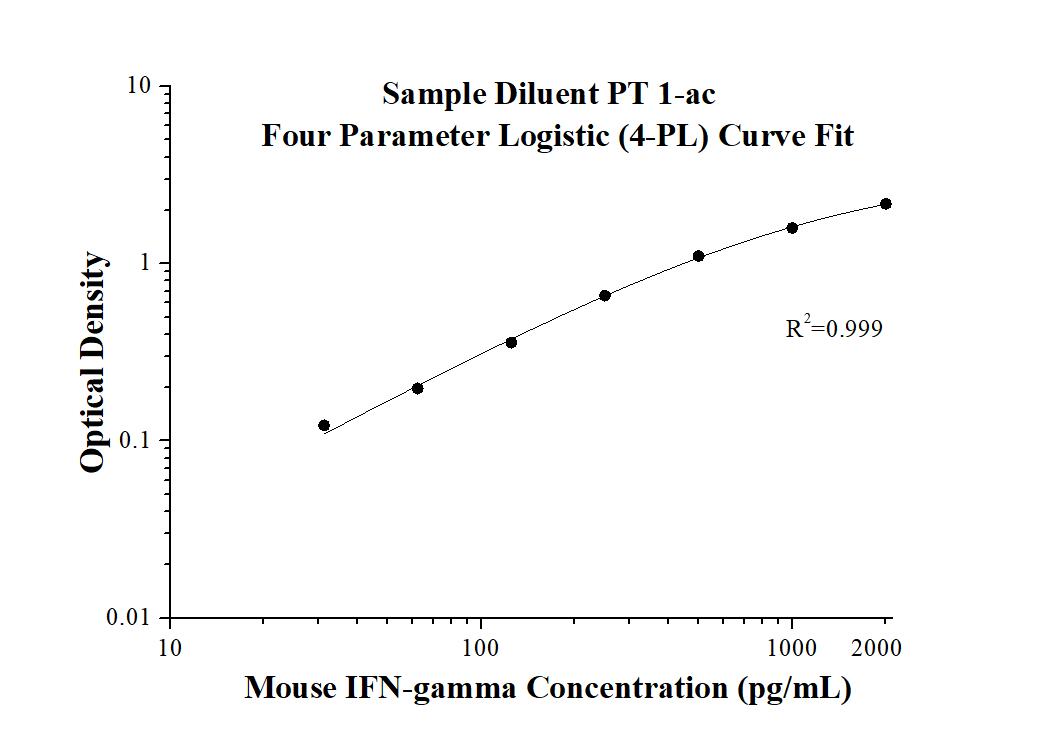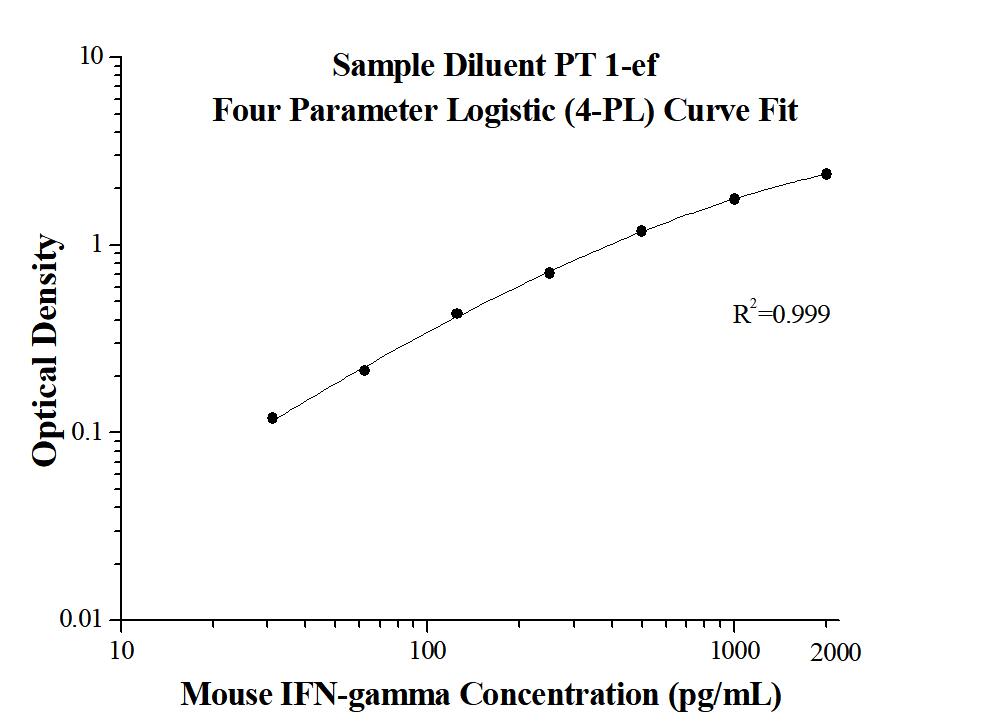Mouse IFN-gamma ELISA Kit
Cat no : KE10001
Synonyms
Ifn, IFN g, IFN gamma, Ifng, IFN-gamma, IFN-γ, interferon gamma
Validation Data Gallery
Product Information
KE10001 is a solid phase sandwich Enzyme Linked-Immuno-Sorbent Assay (Sandwich ELISA). The IFN-gamma ELISA kit is to be used to detect and quantify protein levels of endogenous IFN-gamma. The assay recognizes mouse IFN-gamma. An antibody specific for IFN-gamma has been pre-coated onto the microwells. The IFN-gamma protein in samples is captured by the coated antibody after incubation. Following extensive washing, another antibody of biotinylated specific for IFN-gamma is added to detect the captured IFN-gamma protein. For signal development, Streptavidin-HRP is added, followed by Tetramethyl-benzidine (TMB) reagent. Solution containing sulfuric acid is used to stop color development and the color intensity which is proportional to the quantity of bound protein is measurable at 450 nm with the correction wavelength set at 630 nm.
| Product name | Mouse IFN-gamma ELISA Kit |
| Tests | 1 X 96 well plate |
| Sample type | Serum, Plasma, Cell culture supernatants |
| Assay type | Sandwich |
| Sensitivity | 5.5 pg/mL |
| Range | 31.25-2000 pg/mL |
| Reactivity | Mouse |
| Tested applications | Sandwich ELISA |
| Gene ID (NCBI) | 15978 |
Recovery
| Sample Type | Average | Range |
|---|---|---|
| Mouse serum | 91% | 81%-95% |
| Cell culture supernatants | 92% | 79%-104% |
IntraAssay
| Sample | n | mean ( pg/mL) | SD | CV% |
|---|---|---|---|---|
| 1 | 20 | 207.1 | 10.3 | 5.0 |
| 2 | 20 | 367.4 | 16.5 | 4.5 |
| 3 | 20 | 1,101.3 | 76.1 | 6.9 |
InterAssay
| Sample | n | mean ( pg/mL) | SD | CV% |
|---|---|---|---|---|
| 1 | 24 | 184.4 | 15.0 | 8.2 |
| 2 | 24 | 330.7 | 32.4 | 9.8 |
| 3 | 24 | 917.8 | 88.9 | 9.7 |
Background Information
The IFNs were originally discovered as agents that interfere with viral replication. Initially, they were classified by the secreting cell type but are now classified into type I and type II according to receptor specificity and sequence homology. Interferon gamma (IFN-γ) is a soluble cytokine that is the only member of the type II class of interferons. It is secreted by Th1 cells, cytotoxic T cells and NK cells. The cytokine is associated with antiviral, immunoregulatory and anti-tumor properties and is a potent activator of macrophages. It plays crucial roles in pathogen clearance. Aberrant Ifng expression is associated with a number of autoinflammatory and autoimmune diseases. It has been identified in many studies as a biomarker for pleural tuberculosis (TB). Mutations in this gene are associated with aplastic anemia.
Properties
| Storage Instructions | All the reagents are stored at 2-8℃ for 6 months or -20℃ for 12 months. Refer to the protocol for further storage instructions. |
| Synonyms | Ifn, IFN g, IFN gamma, Ifng, IFN-gamma, IFN-γ, interferon gamma |
Publications
| Species | Sample Type | Title |
|---|---|---|
Bioact Mater Turning foes to friends: Advanced "in situ nanovaccine" with dual immunoregulation for enhanced immunotherapy of metastatic triple-negative breast cancer | ||
ACS Nano Self-Assembly of Podophyllotoxin-Loaded Lipid Bilayer Nanoparticles for Highly Effective Chemotherapy and Immunotherapy via Downregulation of Programmed Cell Death Ligand 1 Production. | ||
Biomaterials The programmed site-specific delivery of LY3200882 and PD-L1 siRNA boosts immunotherapy for triple-negative breast cancer by remodeling tumor microenvironment. | ||
Theranostics Ultrasound (US)-activated redox dyshomeostasis therapy reinforced by immunogenic cell death (ICD) through a mitochondrial targeting liposomal nanosystem | ||
Cancer Lett SIGLEC15 amplifies immunosuppressive properties of tumor-associated macrophages in pancreatic cancer. | ||
Oxid Med Cell Longev Simvastatin Reduces NETosis to Attenuate Severe Asthma by Inhibiting PAD4 Expression |

